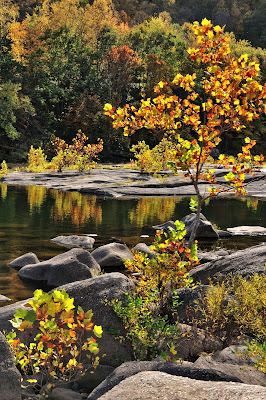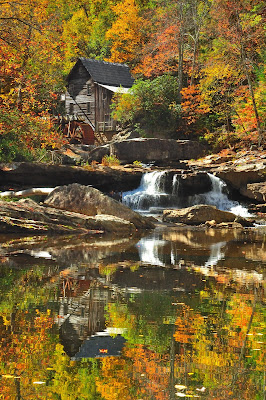 |
| Briery Knob |
Tip #1: Experiment with the White Balance.
White balance settings on your camera compensate for the kind of light illuminating the scene you are shooting. As evidenced by the color of the sky, a sunny day sheds a lot of blue light. Your eye working with your mind automatically tones down the excess of blue light in such a way that a white object will still appear white to the eye. But a camera does not do this. It simply records without bias the colors of light hitting its sensor. |
| Example Photo |
 |
| Babcock State Park |
Tip #2: Experiment with Exposure Settings.
Exposure settings control the amount of light allowed to make each image. Under-exposed images are excessively dark and detail is lost in shadowy areas. Over-exposed images are excessively bright, and colors can appeared washed out, meaning overly white and lacking in full rich color. In my opinion, the bright colors of autumn leaves are more frequently over-exposed than under-exposed. |
| Highland Scenic Highway |
 |
| Highland Scenic Highway |
Tip #3: Use Backlighting to Brighten the Leaves.
As fall progresses, leaf colors fade. To squeeze the last drop of color from the leaves in the example image, I chose to photograph them with backlighting, which means “to light from behind.” In nature photography the sun is the primary light source, therefore, to backlight autumn leaves keep them between you and the sun. With backlighting even fading leaves are brighter, more colorful, and often appear to glow. |
| Dolly Sods |
No comments:
Post a Comment